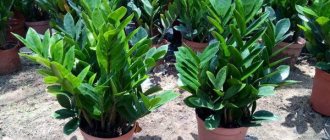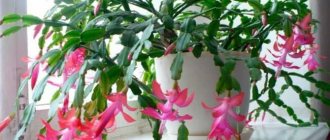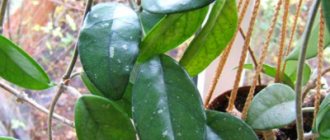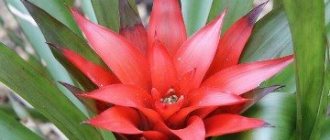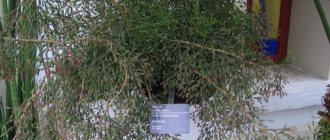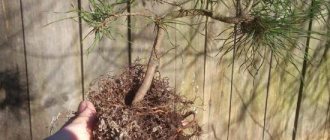What does Chamedorea elegans look like?
Hamedorea elegans belongs to the Palm family (Arecaceae). In its natural habitat, it most often grows in the forests of southern and eastern Mexico and Guatemala. In appearance, it really resembles an openwork creation of nature - narrow and long leaves emanating from a creeping stem.
Hamedorea elegans is a prominent representative of palm trees
The plant blooms at 4-5 years of age - the flowers resemble mimosa.
At home you can find the following varieties related to this type of chamedorea:
- Hamedorea Bridble;
- Chamaedorea Seifrizii;
- Chamaedorea Metallica;
- Chamaedorea Ernesti-Augustii;
- Chamaedorea Cataractarum or “cat palm”;
- Chamaedorea Erumpens.
For reference: the Latin name of the species is Chamaedorea elegans. Therefore, novice flower lovers looking for Chamaedorea elegance fail - an error in the ending does not allow them to find the desired flower.
Medicinal properties
You can keep this palm tree in your home not only because of its decorative qualities, but also because of its pronounced useful characteristics. Palm tree is one of those plants that purify the air from harmful impurities and suppress the growth and development of pathogenic microorganisms.
The plant itself is not classified as poisonous, so it can even be placed in a child’s room. The plant helps drive away depression and melancholy, but it is best to place it in the living room, but should not be placed in the bedroom. The benefits are quite obvious, there is no harm as such.
The first mention of the plant came from Central and South America. In ancient times, it was believed that chamedorea was the best plant for meditation and self-knowledge. It was also used for food.
Hamedorea gracilis
Hamedorea elegans belongs to the Palm family. Externally, the flower resembles a shrub, with straight thin stems. The height of the plant varies from 1.5 to 2 meters. The upper part of the stems are panicles, consisting of several long-petioled leaves that have a beautiful green color.
The flower stalks of this species grow from leaf rosettes. The inflorescences consist of small flower balls. Black fruits are formed immediately after the flowers fall, each containing a seed.
Fruits of the plant
Growing chamedorea at home is not difficult; first of all, you need to decide on the type of flower. Experienced gardeners recommend the following proven species:
- Chamedorea tall. If properly cared for, the bush can grow up to 2 meters. The leaves grow vertically and the flowers bloom profusely. The branches are strewn with bright orange flowers.
- Arenberg. The variety is represented by a single trunk on which wide leaves are located.
- Ernest-Augustus. The most graceful representative of this culture. The leaves on long branches resemble a green hat in appearance.
Medicinal properties
The plant has beneficial qualities and medicinal properties. Hamedorea humidifies the air in the room and purifies it. Absolutely safe for any pets.
Attention! Thanks to its pleasant smell, it evokes fun and awakens activity. It is because of these qualities that it is not recommended to keep the flower in the bedroom or children's room.
Where is the best place to put it in the house?
If space allows, it is best to place such a plant in the hallway so that it cleanses those entering the house from the negativity that they could bring with them.
In addition, on an energetic level, the Hamedorea palm tree represents movement, so it can be placed at the feet of a patient who has problems with the musculoskeletal system. Again, you can’t keep it there all the time, but it’s better to leave it for a couple of hours, and then take it away again to where it won’t affect the living. These can be south, northeast, southeast and northwest rooms.
Hamedorea will perform well where sharp corners of buildings, monuments or tower crane booms are directed at the home.
Botanical description of the plant
“Chamedorea elegans” is not the only name for this palm tree. Information about it can also be found in the description of Niantha graceful, reed and bamboo palms, and Collinia graceful. All these names refer to the same low plant that came to us from the tropical forests of Guatemala and Mexico.
Young specimens have a thin green trunk, but with age its color changes - it becomes chestnut. In its natural habitat, the tree can grow up to 2 m, but when grown at home, its height rarely exceeds 1.5 m. The dark green compound leaves of the palm tree are thin, feathery (usually no more than 7–8 pieces in the crown).
Each such leaf forms a rosette with smaller leaves collected in pairs on a petiole. The flowers that appear during flowering are yellow, small and fragrant, forming a panicle. A little later, their place is taken by berries, no more than the size of peas. They all have only one seed.
At home, to form fruits, the plant is pollinated by hand. Hamedorea is a shrubby plant with many shoots emerging from a creeping trunk. They all have one growing point and do not branch.
Did you know? The described palm tree received its name due to its low growth and accessible height of the fruits. Translated from Greek, "chamai" means "low" and "dorea" means "gift."
Features of caring for Hamedorrhea Elegance at home
| Temperature | 12-20˚С, does not tolerate too low and high temperatures. |
| Air humidity | About 50% is recommended, but tolerates low humidity. |
| Lighting | In summer, the soil should be constantly moist; in winter, watering should be reduced. |
| Watering | Regular, abundant after the top layer of soil dries out. |
| Palm soil | A substrate of 3 parts of turf soil and 1 part each of sand, peat, and deciduous soil. |
| Feeding and fertilizer | Universal fertilizer crushed in half with water is applied once every 2-4 weeks. |
| Transfer | Young plants require annual replanting, then every 3 years. |
| Reproduction | Seed method, suckers, dividing the bush. |
| Features of cultivation | Requires shading and frequent watering. |
Caring for a plant involves following simple rules. Compliance with temperature conditions, lighting standards, and watering rules will lead to excellent results and a healthy plant.
Temperature
In summer, Chamedorea Elegance is demanding on temperature conditions. The room temperature must be maintained at 20.. 25 degrees.
In winter, the flower is moved to a cool place, the temperature in which should not exceed 15 degrees.
Attention! The plant does not tolerate wind loads - when ventilating the room, you need to try to monitor this.
Lighting
The palm tree calmly reacts to any lighting. Feels good both in the shade and in maximally lit conditions.
It is not recommended to place the flower in direct sunlight - burns may appear on the leaves.
To ensure uniform formation of the bush, it is necessary to turn the plant towards the light from time to time.
We invite you to familiarize yourself with the benefits and harms of walnuts for the body.
The flower requires abundant and systematic watering. At elevated temperatures, the amount of water added to the soil should increase.
If the substrate dries out, the death of the plant is inevitable.
Attention! Humidification is carried out with water at room temperature, which must stand for several days.
Spraying
Experts recommend sprinkling at least 2 times a day. You can spray the flower with a regular spray bottle, or you can use a shower head.
Spraying is carried out with as warm water as possible.
Flowering plant
Humidity
High humidity is the best habitat for chamedorea.
Important! The proximity of heating devices can harm the plant, the leaves begin to dry out.
Caring for Chamedorea Graceful involves placing the flower in close proximity to a humidifier or artificial pond.
For planting, it is recommended to use special soil purchased in the store. It must be marked “for palm trees”.
When preparing yourself, you need to take:
- turf soil (3 parts);
- deciduous soil (1 part);
- coarse river sand (1 part);
- peat (1 part).
By adding charcoal to the soil, its nutritional properties are improved.
For a palm tree, you need to make drainage at the bottom of the pot. Expanded clay, gravel, and broken brick are suitable for these purposes.
Feeding
Fertilization is an important aspect of the healthy development of any plant. From spring to autumn, fertilizing is carried out every 2 weeks. The liquid fertilizer created specifically for palm trees has proven itself to be excellent. Some people use foliar fertilizers.
Important! When using complex fertilizers recommended for other species, the dosage should be halved.
Gardeners have proven the undeniable benefits of nitrogen for indoor flowers.
Home care
How to care for Hamedorea at home?
Features of care after purchase
The purchased plant was grown in special industrial conditions, very different from those in which Hamedorea will grow.
Specialists are responsible for the appearance and care, so the plants in stores are always in excellent healthy shape.
Afterwards, the palm tree undergoes transportation and adaptation to other conditions . It is important to make this stage as comfortable as possible.
- The first thing to do is to inspect the plant for diseases and pests. It is unlikely that store-bought Hamedorea will be infected or diseased, but it still doesn’t hurt to be on the safe side.
- Under no circumstances should you replant the palm tree during the first month. This will be additional stress for the plant, and it may become seriously ill. An exception can only be if the delivered soil has traces of mold.
- The palm tree should be provided with optimal lighting, air humidity and a comfortable temperature from the very first days.
- Also, the plant does not need feeding for the first month after purchase.
Here you can watch a video about the features of buying and caring for a bamboo palm at home.
Bloom
Depending on the subspecies, Hamedorea blooms with yellow, orange and orange-red flowers. Flowering occurs regardless of the time of year.
How does Hamedorea bloom? Photo of a flowering indoor plant.
Blooming Hamedorea: photo of flowers.
Lighting
Hamedorea prefers shaded areas and does not tolerate direct sunlight . The best place allocated in the house will be close to the window on the western or eastern side. It also grows well in the shade.
The palm pot should be rotated once every two weeks to form a symmetrical crown.
On summer days, the plant feels good in the fresh air, so it will be useful to take it out onto the balcony or veranda. The main thing is to protect from direct sunlight.
Temperature
Hamedorea is a very heat-loving plant . The optimal temperature for it is considered to be 17–30 °C. If the soil in the pot drops below 15 °C, the roots may begin to rot.
The palm tree does not tolerate drafts and sudden temperature changes. In winter, heating devices should not be very close to it.
Air humidity
For Hamedorea, high air humidity is very important , otherwise its leaves begin to turn yellow and dry out. To do this, it must be constantly sprayed with soft water in summer and spring.
But you should not do this in winter, as this can provoke the development of fungal diseases.
During the heating season , when the air becomes dry, you can place a small container of water next to the tub in which the palm tree grows. You can also place the palm tree on a tray with expanded clay, which must be kept moist at all times.
Watering
When caring for this plant, it is important to prevent excessive soil moisture . For normal and healthy growth, it is important to water when the soil in the pot is completely dry. It is unacceptable to keep the soil of Hamedorea constantly wet. As a result, the leaves of the palm tree become yellow and the stem at the base darkens.
Ground and soil
The most suitable substrate for Hamedorea is considered to be the Palma soil mixture. The basis of the soil for a palm tree should be :
- Peat 1 part.
- Sand or perlite 1 part.
- Turf soil or clay 2 parts.
- Leaf humus 2 parts.
You can also add some charcoal. The turf soil must be thoroughly sterilized before filling the pot. It is best to do this in the microwave in cloth bags.
At the bottom of the pot you need to put drainage in the form of fine expanded clay or brick chips.
Fertilizers
For feeding, ready-made store-bought fertilizers for palm or indoor flowers are suitable. You can use preparations for dracaena or any others that contain a full list of minerals.
Of all the types of palm trees, this one needs additional nutrition more than others. Hamedorea takes long-term granular fertilizers very well.
Trimming
This palm tree does not require special pruning of leaves to form a crown. She needs to remove dry and damaged leaves in a timely manner. For this you need the following materials :
- Special garden shears.
- Isopropyl alcohol.
- Fungicides.
The pruning shears need to be disinfected with alcohol to avoid introducing infection to the cut site. After removing unnecessary leaves and stems, be sure to treat open wounds with a fungicidal agent.
Seasonal care calendar
March, April . The beginning of intensive growth. Resumption of fertilizing, increased watering, replanting.
May . When the weather is warm, the palm tree can be taken out into the air and taken indoors at night.
June July . Intensive growth, reserve of nutrients for the winter. Provide abundant watering and fertilizing twice a month.
August . Continue applying mineral fertilizers.
September . Gradual reduction in the frequency of watering and fertilizing.
October . The palm tree smoothly goes into a state of rest. Watering is infrequent.
Winter . Careful watering and stopping fertilization until spring.
Transfer
How to transplant Hamedorrhea? Hamedorea is replanted if the roots of the palm tree completely fill the space of the pot . This usually happens within three years. The best time for transplantation is early spring.
Immediately after purchase, it is better not to touch the plant for about a month . We need to let him adapt to new conditions.
During replanting, it is important to preserve the entire lump of earth around the roots . To do this, the plant must be thoroughly watered. Then, holding the soil with your hand on both sides of the trunk, carefully remove the palm tree.
A new pot is selected one size larger than the previous one. A layer of drainage and a little soil mixture are poured onto its bottom. The plant is carefully placed in a pot and covered with the remaining soil. After this, the transplanted plant should be placed in a shaded place for a couple of days without watering, so that the roots quickly penetrate deeper into the soil.
If the palm tree is large and grows in a tub, then there is no need to replant it. She only needs to change the top layer of soil.
The next video will tell you more about transplantation and more.
Benefits and harms
Some problems may arise during cultivation:
- Dry tips of chamedorea leaves are a sign of dry air. It is necessary to regularly ventilate the room and spray the palm tree.
- Leaves turn yellow - too much light or watering with hard water. The plant should be moved to a darker place and soft water should be used.
- The leaves droop, die, and rot - this usually happens in winter due to rotting of the roots of the palm tree. The reason for this is excessive watering of the plant. To correct the situation, you need to reduce the frequency and volume of watering and loosen the soil. You can replant by cutting off the rotten roots, and adding drainage and moisture-retaining components (sphagnum or coal) to the soil.
- Brown spots on the leaves are a sign of overwatering the palm tree or using too hard water. It is necessary to cut off damaged leaves, reduce watering, and use soft water.
- The leaves wither and darken - the consequences of keeping them at low temperatures. You need to move the plant to a warmer room.
- The lower leaves fall off - this is a normal process for aging palm leaves. Such leaves are cut and the cut areas are treated.
- A cotton-like coating on the leaves is a sign of a mealybug appearing on the plant. The bush will need to be treated with insecticides.
Pests that can attack: mealybug, spider mite, scale insect.
Like all palm trees, the slender Chamedorea elegans performs a cleansing function in the house, clearing the air of harmful impurities: formaldehyde, ammonia, xylene and benzene. Increases humidity, making other indoor flowers feel much better. This plant cannot be called poisonous - it is completely safe for humans and any pets.
Some owners of chamedorea note its positive effect on the emotional state of the inhabitants of the house: the plant perfectly improves mood and fights depression, so the best place to place the pot would be the living room or hallway. But it’s better not to place a palm tree in the bedroom - a calmer atmosphere is welcome there, without an extra charge of vivacity.
Regardless of the type of room, chamedorea will always be attractive, and it doesn’t matter whether you grow only it or create a composition from several indoor flowers at once.
Plant strength and energy
In Ancient Egypt, the palm tree was considered one of the personifications of the sun god Ra. It absorbs positive energy and then returns it to the surrounding space.
It is recommended to meditate near chamedorea . Palm tree helps direct energy flows in the right direction, increasing the effectiveness of spiritual practices.
The color of the plant gives an understanding of what kind of energy reigns in the house. When the leaves begin to darken, this indicates bad relationships in the family or the presence of evil spirits. Trying to cope with a large flow of negative energy, the palm tree acquires a dark shade of foliage and stems.
Light leaves indicate harmony in the home and the absence of energy pests.
Palma helps spiritually developed people. Her energy allows:
- achieve your goals;
- to realize yourself creatively;
- have success in finances and personal life.
Palm leaf is a symbol of victory . For centuries, people have noticed that the plant has a positive effect on people. If a person lacks self-confidence or wants to succeed, chamedorea will be an excellent helper.
When and how does it bloom
Hamedorea graceful sometimes blooms, and its inflorescences resemble a mimosa branch.
During the flowering period, the plant knocks out a peduncle from the axils of the leaves - it bears a loose and branched panicle with small inflorescences, yellow, spherical flowers. After flowering ends, a round black fruit is formed in place of the flower, containing one seed.
palm tree blooms like mimosa
The flowers are small and spherical, light yellowish in color. They are not of particular decorative value and in appearance resemble a mimosa branch.
The flowering of this type of palm tree is not tied to the time of year or a specific period. If favorable conditions are created, a palm tree can bloom in both spring and autumn.
In this case, there are no special changes in care, the only thing is that the owners of the palm tree should water it more often and apply subcortex once every 7-10 days.
In this case, spraying is stopped during flowering - they simply place a container of water next to it and that’s it.
The flowering process of this crop begins only in an adult plant, at 3-4 years. The height of Hamedorea will already reach 30-40 cm.
The flowers resemble mimosa and have no decorative value. The number of flowers varies among different varieties. Outwardly, they all resemble a branched panicle located on the stem.
Flower formation
The flowers are small, round, and most often yellow. Other varieties of chamedorea have flowers of red and orange hue.
Palm flowering can begin at any time of the year. At this moment, several panicles are formed.
Reproduction
Reproduction of Hamedorea elegans is often carried out by seed or by root layering. In some cases, a separated part of the bush can be used as planting material. Each option has its own characteristics and nuances.
By division
When grown indoors, the palm root rarely grows to a length sufficient to complete the division procedure. This is the main reason for the rare use of this method of reproduction. Large and heavily grown chamedoreas tolerate such reproduction well. The main thing is to use only a sharp and well-sanitized knife for cutting.
Did you know? Palm trees are long-lived plants that live for hundreds of years in natural conditions. For example, trees of the most famous coconut variety often surpass the five-hundred-year mark.
The division procedure is relatively simple: after removing the plant from the old pot, the grower needs to carefully cut off the connecting roots closer to the center of the plant, and then plant both parts in separate pots. All cuts are sprinkled with crushed coal. If the bush turns out to be very large, with an overgrown strong root system, then it can be divided not into 2, but into 3 or more parts.
By layering
Reproduction of chamedorea by root layering is in many ways similar to the previous method, only in this case you will have to wait until the shoots have several roots of their own. You cannot break off cuttings - they are always carefully cut with a knife and then planted in a peat-sand mixture for further rooting.
We invite you to familiarize yourself with Concrete fence: types, photos, choice
The seed method of propagating Hamedorea elegans is the most labor-intensive of all those listed and will require from the grower not only certain skills, but also considerable patience. Difficulties begin already at the stage of purchasing seed material, because it is not always possible to be sure of the quality of the finished product.
and its further germination. To increase the chances of success, some gardeners decide to prepare the seeds themselves during flowering, cross-pollinating the flowers of an existing plant. If everything is done correctly, fruits will soon appear - with seeds ideal for further germination.
Regardless of how exactly you received the seed material, before sowing it must be pre-treated in a solution to stimulate growth. Usually it is soaked for no more than 5–6 days, then dried a little and planted in seedling cups (one seed for each container).
It is advisable to place glasses covered with polyethylene in the warmest place possible, leaving them there for 2–5 months. All this time, the soil in the cups must be periodically moistened, avoiding any drafts. You can transplant young plants into a permanent pot when the first leaf of the seedlings reaches a length of 4 cm.
In the spring, the bush of an overgrown palm tree is carefully removed from the pot, and the earthen lump is washed away under running water. After this, the bush is divided into several parts so that each has a healthy, formed shoot and a good root system.
Reproduction of Hamedorea by division
Reproduction of Hamedorea by division
You can also grow Hamedorea by division. This propagation option is good in the case when you already have a blooming palm flower in your apartment, but you want to have a few more specimens for yourself or for sale. How does this happen? More details:
- Perform the procedure in the spring months - from mid-March, April, May.
- Remove the palm bush from the container and lightly wash the earthen lump under a tap with running water.
- Divide the bush into several elements so that each of them retains a healthy, fully formed shoot (cutting) and developed roots.
- Place the resulting parts of the palm bush in different pots.
It is worth noting that flowers, when propagated by division, will need about a month to adapt, after which they will begin to actively grow.
Difficulties in growing
All tropical plants, when grown in the middle zone, are characterized by increased care requirements. Therefore, it is not surprising that the slightest violations can negatively affect health, and therefore the appearance of the palm tree.
The most common problems of gardeners in this case include:
- Yellowing and drying of the tips of leaf blades, which is most often associated with dry air in the room. Try cutting off damaged parts and increasing the humidity.
- Rotting of leaves at the level of the ground line. The cause of the problem also lies in violation of the rules of care, only this time the humidity and regularity of watering should not be increased, but, on the contrary, reduced. Do not forget to make sure that the temperature conditions are optimal for the plant, because in a cold room the leaves will not be able to dry out quickly.
- The appearance of yellow spots on leaves is a common result of prolonged exposure to direct sunlight. Find a new place for the palm tree. It is likely that her appearance will soon return to normal.
- Withering and curling of leaf blades. The cause of this problem is often high temperature. The plant is very hot, and it is better to move it to a cooler room.
- Slowing down the growth of green mass. If the leaves are growing very slowly and the palm appears bare, it may be lacking nutrients or the room temperature is too low (this often occurs in winter).
- The appearance of brown spots on leaves sometimes occurs with a sharp change in temperature, as a result of a draft. Move the plant to a more protected place.
- Drying of young leaves is the result of rotting of the plant's root system due to excess soil moisture. If this is indeed the case, then the further viability of the palm tree will depend on the degree of damage to its root part.
One should not exclude from possible problems the defeat of palm trees by diseases and pests, among which spider mites, aphids, scale insects and mealybugs are particularly active, often causing changes in the color of leaves and the appearance of characteristic cobwebs and spots. In this case, only specially developed chemical compounds (for example, Actellik) will help solve the problem.
As for possible ailments, Chamedorea elegans is often overcome by fungal infections, causing yellowing and falling leaves, and rotting of the root system. In case of partial infection, fungicidal preparations (Chomecin or Kuprozan) and transplanting the plant into a new substrate will help rid the palm tree of the fungus. If the fungus has damaged most of the rhizome, then the palm tree can no longer be saved.
How does Hamedorea elegans reproduce?
Flower propagation is carried out in the most standard ways: using seeds, cuttings, air layering.
The seed method involves the use of a container in which greenhouse conditions can be created. Seeds are sown superficially in a pre-prepared nutrient substrate. The first seedlings will appear in 1-1.5 months.
Young seedlings
On a note! The seed can hatch from 1 to 6 months. It all depends on the quality of the seeds and growing conditions.
Propagation by cuttings is the separation of root suckers from an adult plant. Strong roots on shoots are the first indicator for replanting. The carefully separated plant is transplanted into a previously prepared pot.
The fastest way is propagation by air layering.
Important! It is necessary to wait for the formation of strong roots on air layering.
If an adult plant has grown too much, then replanting by dividing the bush is the only way out. Hamedorea is taken out of the pot along with a lump of earth. The root system and leaves are divided into the required number of divisions. Such a plant should grow in the same conditions as an adult representative.
Reproduction by dividing the bush
Propagated by seeds, layering and by rooting cuttings.
The seeds are sown in special greenhouses, where the temperature is maintained at 25-27 degrees - the first shoots appear after 30-40 days.
The process of seed germination itself can take up to six months - all this time the soil is sprayed, and fertilizers are applied in the same way once a month. When shoots appear, care is the same as for an adult plant.
Important! When 5-6 true leaves appear, transplant into a separate container.
Take strong, healthy cuttings and carefully cut them with sharp pruning shears. Planting material is placed separately in individual containers. Care is the same as for an adult plant. After the plant gets stronger, it is planted in a permanent place, in a prepared container.
We invite you to find out what the taste of potatoes is to explain to your child.
The main thing in this case is not to break off the cuttings - they are carefully cut off with a sharp knife and then planted in peat soil with the addition of sand. It is in this soil that the cuttings take root - this takes 4-5 months, after which the plants are planted in separate flowerpots.
Transfer
The plant does not like a large number of transplants. The young plant is replanted as the roots encircle the earthen ball - on average, once a year. Moreover, adult plants are replanted once every 3-4 years, choosing a pot 2-3 cm larger in diameter than the previous one.
correct transplantation is the key to abundant growth
Folk signs and superstitions
All folk beliefs associated with Chamedorea elegans are based on its energetic activity. Many flower growers believe that in a house where this palm tree grows, conflict situations arise much less frequently, and all household members are more cheerful and cheerful. The calming effect of the plant will also be useful in the workplace (it doesn’t matter whether it’s an office or a production facility).
With the correct placement of chamedorea, in accordance with the theory of Feng Shui, success in business life will definitely not take long to arrive. We can talk about the advantages of palm trees as indoor plants for a very long time. The main advantage is the ease of caring for the plant. The described chamedorea is not so demanding to care for, but its decorative qualities, which you can appreciate almost immediately after purchasing an adult plant, are quite high.
Folk omens advise every housewife to purchase or grow chamedorea. Thanks to her presence in the house, a person’s fate will noticeably change:
- there will be good luck in business;
- the microclimate in the house will become peaceful and calm;
- the aroma of this flower repels evil spirits and protects the house.
Hamedorea flower
There is another superstition that literally haunts this species. If you carry an adult plant into the house in your arms, troubles and troubles come with it.
To believe or not in omens is everyone’s business. The main thing is that the flower will decorate absolutely any room and will delight you with its appearance for many years.
Home care for Hamedorrhea elegans requires a little attention and patience. If you follow the recommendations above, you can grow a wonderful indoor plant that fits perfectly into almost any interior.
Regarding existing signs and superstitions, it is enough to highlight the following:
- The palm tree gives a person positive energy, increasing his strength and clearing his thoughts of negativity.
- Chamedorea has a positive effect on the fate of the owners - they are successful in business and love affairs, disputes disappear, and a protective shield appears from energy vampires.
Therefore, it is recommended to place such a plant in every room.
Egoists should not keep such a flower at home - they will ignore feelings and emotions, attention from relatives.
In conclusion, it is worth emphasizing that Hamedorea elegans is a beautiful and unpretentious plant; if all care recommendations are followed, it will help create real tropics at home. Even a novice flower lover can plant it. At the same time, the conditions of detention and principles of care will not require excessive efforts.
Feeding and fertilizing the houseplant Hamedorea
It is necessary to feed the houseplant Hamedorea during its active flowering phase. That is, the flower needs nutrients most of all in the summer. It is enough to use a universal fertilizer, for example Agricola . It should be used at intervals of 14-28 days. Be sure to dilute the fertilizer with water, since the concentrate is quite strong.
Worth knowing: In cold weather, when the dormant period begins, Hamedorea does not need to be fed.
Possible problems in cultivation and diseases
Most often, plants are susceptible to disease due to non-compliance with care rules.
- Drops buds and leaves
The falling of flowers and leaves occurs due to a sharp change in room temperature. A decrease in temperature is detrimental to this species.
The appearance of light spots on the leaf plates is caused by direct sunlight hitting the flower. Hamedorea is unpretentious to its habitat, but diffused light is more beneficial for it.
The drying process of palm leaves begins at the slightest decrease in air humidity. This is due to the fact that chamedorea is an extremely moisture-loving plant.
Most often, the falling of the lower leaves is a natural process. Shedding of leaves can also be caused by temperature fluctuations.
There are three types of pests that can attack this species: spider mites, scale beetles, and thrips.
The treatment is the same for everyone. If insects are detected, it is necessary to urgently treat the entire plant and soil with Actellik or any other insecticide.
Rotting of the root system is caused by violation of plant watering standards. The first signs are characteristic spots on the stems and an unpleasant odor emanating from the soil.
Attention! To save from root rot, it is necessary to urgently replant the flower and follow the rules of moisture in the future.
Yellowing of the entire leaf blade is most often caused by chlorosis. The disease appears when there is an increased level of calcium in the soil. Transplanting into a universal substrate will help save the flower from death.
In most cases, plant death occurs due to improper care.
The reason may lie in insufficient watering or, on the contrary, excessive application of water and rotting of the root system. This happens somewhat less frequently due to a lack of micro and macroelements in the soil.
Slower growth and pallor of the green mass may occur due to a lack of nutrients, or the temperature in the room itself is below normal.
The tips of the leaves can dry out due to non-compliance with the humidity regime in the holding room - it is enough to regularly spray the palm tree and after a few weeks the foliage will recover.
Falling of the lower leaves can occur due not only to excessive watering and spraying of the plant, which needs to be reduced, but also to a lack of macro- and microelements. Therefore, in the first case, watering and spraying are reduced, in the second, fertilizing is applied.
Pests
For the most part, Chamedorea elegans suffers from spider mites - this is manifested by the appearance of cobwebs on the leaves, black or red dots. Therefore, it is necessary to regularly spray the plant and wash it in the shower with soap more often.
Palm trees are less commonly affected by insects such as aphids and scale insects, thrips and whiteflies. In this case, the palm tree is sprayed with fungicides.
Other problems
- Young leaves dry out and roots rot. Therefore, it is important to water less often and spray more.
- Brown spots appear on the foliage - this is a consequence of a sharp change in temperature in the room.
- Withering, and then curling of the leaf plate - high ambient temperature. The palm tree is too hot - place it in a cooler room.
proper content is the key to a beautiful look
Everything is quite simple - by observing the conditions of maintenance, the owner receives a luxurious decoration for his home.
Diseases and pests
Hamedorea, despite all its unpretentiousness, occasionally also gets sick or is attacked by pests. This is usually a consequence of improper care; here are 5 common mistakes of a novice amateur gardener:
- Most often, flower growers are concerned about the question “why the leaves of Hamedorea dry out.” In this case, you need to clarify which leaves are drying up? If only the lower ones, then there is no need to worry - this is a natural growth process. If the tips of Hamedorea's leaves dry out, the air in the room is too dry, or the palm tree has simply not been watered for a long time. In this case, it is enough to spray the plant with a spray bottle a couple of times a week, and also to more accurately observe the watering regime, preventing the earthen lump from standing dry for too long.
- What to do if the young leaves of Hamedorea dry out, becoming gray withered in color? Most likely, the roots of the plant began to rot due to excess moisture. In this case, you need to moderate watering, check the drainage holes in the pot and the presence of water in the pan.
- Spots on a palm tree can be a sign of sunburn or temperature changes that are unpleasant for the plant; a good solution would be to move the pot to another location.
- A white coating on the leaves of Hamedorea may indicate the presence of pests; you need to carefully examine the entire plant. Although, the reasons may be more prosaic - for example, a white coating also remains from sediment from too hard water used when spraying. This coating will disappear after a warm shower, which is recommended for the palm tree once every one to two months.
- Sometimes Hamedorea does not grow in height, in this case you need to make sure that the roots have not filled the entire pot; a transplant may be required. In general, palm trees of this species grow relatively slowly; in adult specimens, growth of 3-5 centimeters per year is considered good.
- If Hamedorea has dropped all its leaves, you should remember how it was cared for recently, and whether there were any particularly stressful events for the plant: perhaps the flower was moved to a new place, too much fertilizer was applied, or they forgot to water it again for several months. How to revive Hamedorea? Experienced gardeners advise carefully examining the plant, if necessary, removing it from the pot and also inspecting the roots. If they are rotten, they are carefully trimmed and then transplanted into a smaller container with new soil. After this, you will need to carefully follow the rules of care, then the palm tree will have a second chance.
- A completely bare stem of Hamedorea most likely means the death of the plant. In this case, “resuscitation” may no longer help and you will have to go to the store for a new indoor flower.
